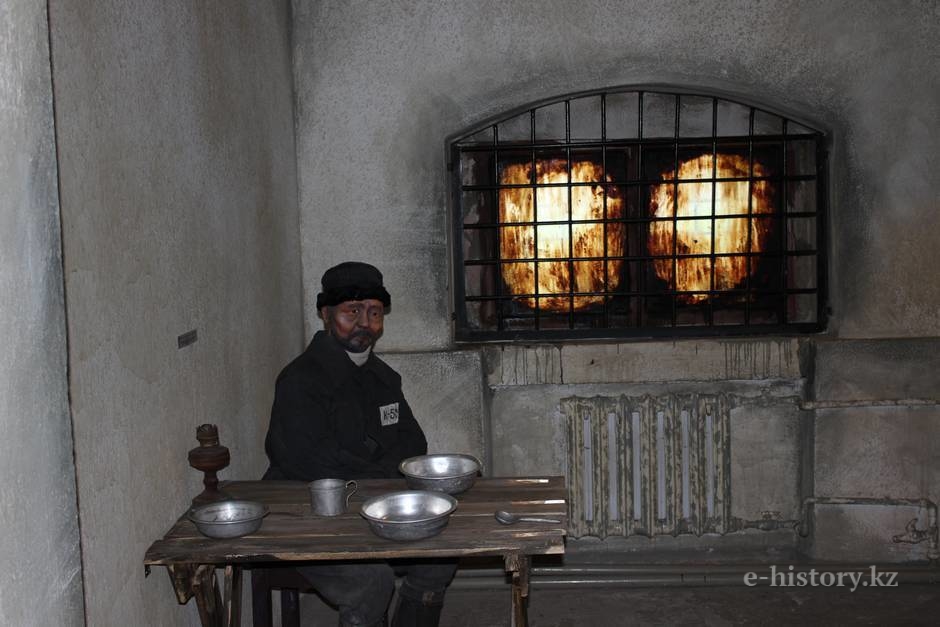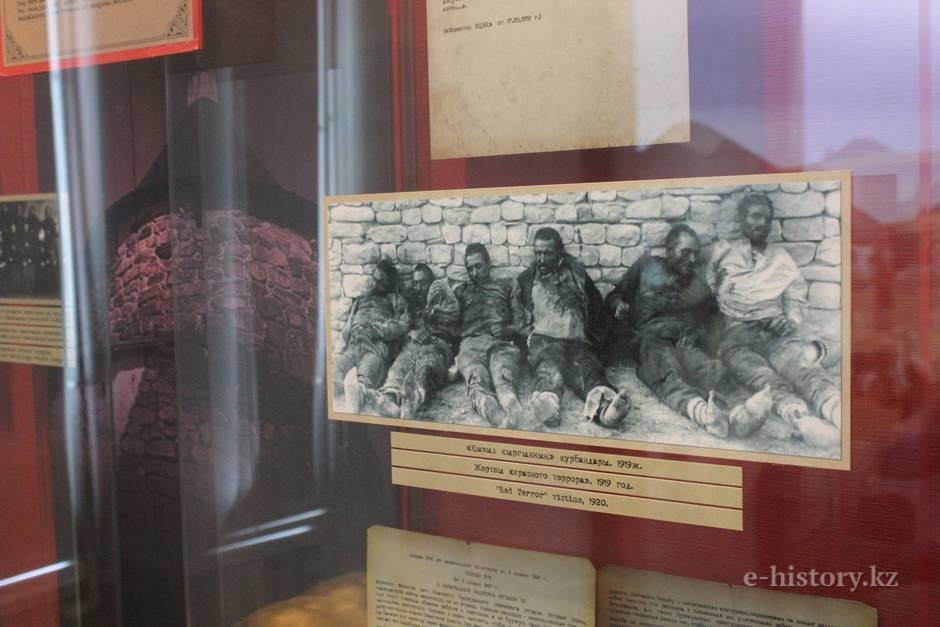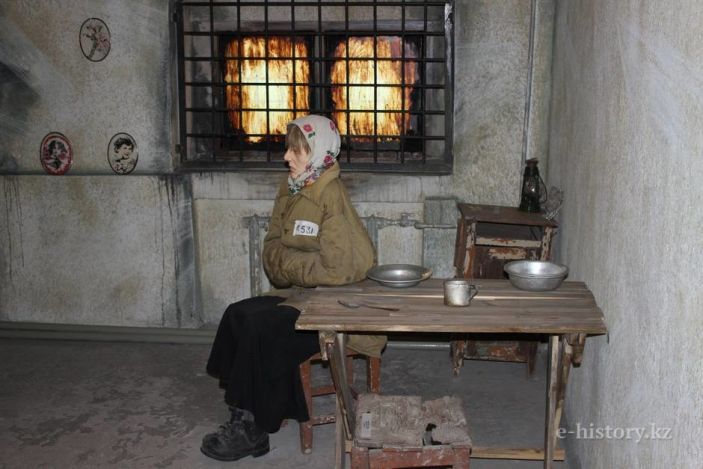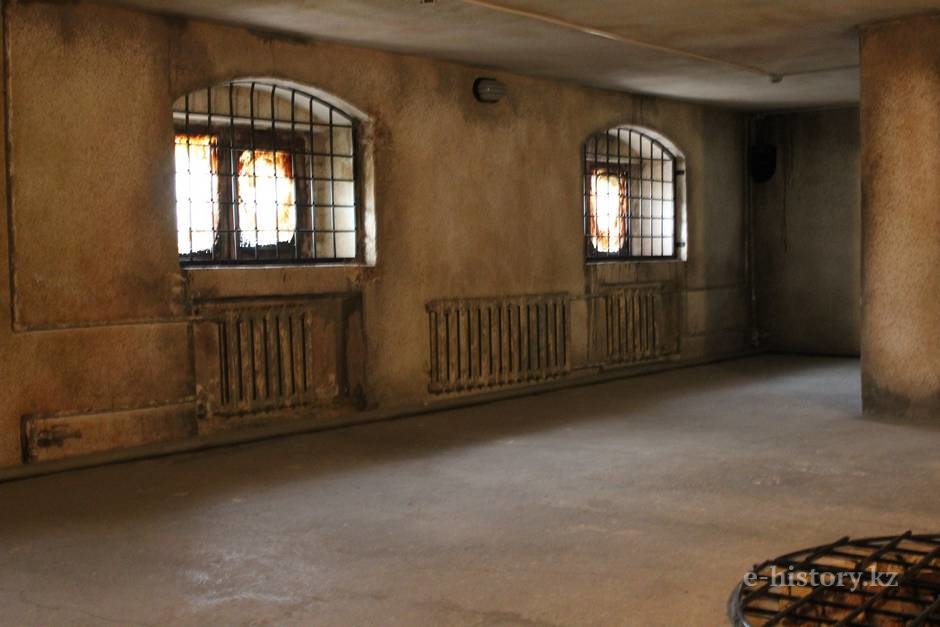
We specially arrived to the camp of Karlag (Karaganda Corrective Labor Camp), located in the village Dolinka (45 km from Karaganda) to tell about the violent policy pursued in the thirties in relation to victims of political repression.


Prisoners

We began to listen carefully the story that told us tour guide... Especially for visitors there is a scheme, which shows when and how many prisoners arrived to Karlag. It shows the number of prisoners from 1931 to1959. It is obvious shown in the scheme that the peak of repression falls on 1950 when 65 763 people arrived to the camp. The reason for it was Stalin’ age, as he was getting older he saw in all the enemies...


The museum’s staff began the story based on the words of the founder and head of the All-Russian Extraordinary commission on fight against counterrevolution, sabotage and speculation — Felix Dzerzhinsky (nicknamed Iron Felix): "Article would be found, there is only matter of a person". "If you are not in the camp it does not mean that you are law-abiding citizen. It means that it is our fault".



A half million people were shot during the reign of Nikolay Ezhov, famous in the history as "Bloody dwarf". Abakymov another blood-thirsty man who worked in Karlag, personally participated in executions and invented new tortures. When he was arrested, all tortures which were created by him were used on him. He even wrote complaint to Stalin in which he asked why all his tortures are used on him.

— According to some journalist there was no violence in Karlag. However, in the building of the present room where earlier were barracks of strengthened mode, punishment cells, ruins remained, — said the museum staff showing the punishment cell.

Jail with zindan

Punishment cell — a jail for a person. The prisoner was allowed to sleep on the ice floor 4 hours per day. The rest of the time he was obliged to stand. For attempt to lean against a wall cruelly beat. Sitting in a punishment cell prisoners got weakened. Very often such prisoners after transfer to the ordinary camera, died.
When someone died his cellmates did not tell about his death, they hide his body. This was made to get excess 250 grams of bread.
People who belong to any religions and who wore any items or books that showed their faith were subject of immediate execution. The sentence one execution was never postponed till the next day.

Torture Chamber
Next to Karlag there was Akmolinsk Camp of Wives of Traitors of the Homeland (ACWTH). Conditions in this camp were especially difficult. Women at that time got jailed because they did not write denunciation to their husbands.
Newborns were taken away from the captives. Mother was allowed to feed the baby only three times per day, more than three times the escort to the child did not allow. But, how could mother who was starved had milk... Child mortality was very high. There was the cemetery called "Mamochkino kladbishe" near camp where children were buried.
In camps there were very big disorders and therefore somehow to calm women, letters dictation forced to take more senior children: "Dear mother, I’m fine".
There were big disorders and to calm women senior children forced to write letters saying "Dear mother, I am fine".

Exhausted prisoners of Karlag
At the same time, Karlaga’s territory was adjoined by both Zhezkazgansky camp and camp for prisoners of war Spassk. Prisoners were used as free labor. People worked in mines and on sowing fields for 12-14 hours per day for 250 grams of bread and a glass of water. Fields of Karlag and the camps adjoining to it were irrigated by aryk (water channels). At that time aryks mainly were manually excavated. After such works many prisoners died because of colds. History remembers that event when workers showed their dissatisfaction with conditions in the camp. The result of it was suppression of prisoners by tanks...

The stretchers for removal of corpses

Woodworking machine of Yeugeni Toboltsev
In the museum there is a hall devoted to the agriculture of Karlag. In one of the hall there was woodworking machine of Yeugeni Tobolcev. He was expropriated and deported to Kazakhstan in 1931. This machine was by him and helped him to earn his living by making legs for chairs, handles for doors and curtains.
Among the prisoners there were many scientists and smart people, who made a huge contribution to development of agriculture of Karlag. For example, Anna Lanina, while being jailed find out new breed of cows, which give forty litters of mils per day. For scientific contribution Beria awarded her with prize, but she was not released. Anna Lanina stayed in the prison until her term completely finished.
The smartest people of USSR, scientists, professors and academicians were sent to Karlag to help collective farm "Giant". More than 5 000 types of wheat, which still appreciated abroad, were removed. Firstly, it was due to frost-resistant of them and secondly, flour was the highest quality.
One of the prisoner of Karlag Alexander Chizhevsky invented medical lamp, which helped both overcome cold and tuberculosis. Today, we still have a chance to buy Chizhevsky’s lamp in the drugstores.
Alexander Chizhevky was multifaceted person. He wrote poems and drew pictures. His works are still among valuable exhibits of the museums.

Library of scientists of the camp
Many famous people of that time went through Karlag. Among them was L. Gumilyov, mother of famous ballerina Maya Plisetskaya, wife Beybet Maylin, member of Alash Horde, popular actress Okunevskaya and others. This is just a short list of names. Some of them died in prison and some managed to escape, but they lived with painful memories...
Gulzhanat ABDIMOMYNOVA
Full photo report here
